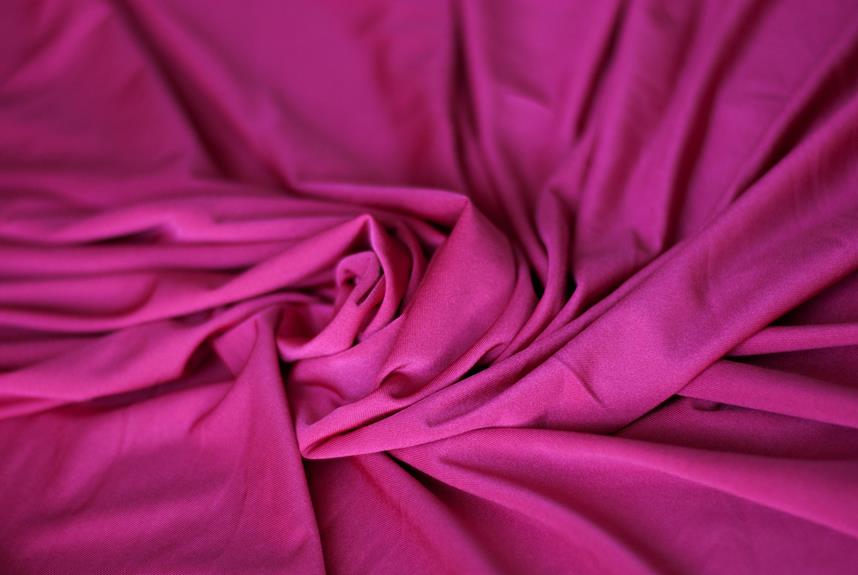When you're looking to achieve crisp finishes in your sewing projects, fabric starch can be a valuable tool. You'll want to start with clean, dry fabric and select the right type of starch—liquid, spray, or powder—depending on what you're working on. Applying starch evenly is crucial, but knowing the best techniques for ironing afterward makes a significant difference in the final look. To ensure you're getting the most out of your starch application, consider what comes next in the process and how these choices can elevate your work to a professional level.
Table of Contents
Key Takeaways
- Choose the appropriate starch type (liquid, spray, or powder) based on the fabric and desired crispness for optimal results.
- Prepare fabrics by washing, drying, and ironing to ensure they are clean, dry, and wrinkle-free before applying starch.
- Apply starch evenly, holding the spray 6-12 inches away, and work on one section at a time to avoid stiffness.
- Set the iron to the correct temperature for the fabric and use smooth strokes, focusing on collars and cuffs for a polished finish.
Understanding Fabric Starch Types
When you're choosing fabric starch, it's important to know the different types available to get the best results for your projects. There are generally three main types of starch: liquid, spray, and powder. Each type serves a specific purpose and offers unique benefits.
Liquid starch is perfect for larger projects or when you need to treat multiple yards of fabric. It can be diluted to your desired strength, giving you flexibility in achieving the crispness you want.
Spray starch, on the other hand, is great for quick touch-ups or smaller areas. It provides a convenient way to apply starch directly to the fabric, making it easy to achieve that freshly pressed look.
Powder starch is a versatile option that you can mix with water to create a paste or liquid solution. It allows for precise control over the starch concentration, so you can customize it based on your fabric type. Some starches even include additional ingredients to enhance fabric care, like sizing or fragrance.
Understanding these types helps you select the right one for your specific needs, ensuring your fabric looks sharp and professionally finished.
Preparing Your Fabrics
Before applying fabric starch, you should always wash and dry your fabric to remove any dirt or residues that could affect the final finish. This step is crucial because any particles left on the fabric can interfere with starch adhesion, leading to uneven results. Use a gentle detergent and follow the manufacturer's care instructions for the best outcome.
Once your fabric is clean, dry it thoroughly. You can either air dry or use a dryer, depending on the fabric type. If you're using the dryer, consider removing the fabric while it's still slightly damp. This way, it'll be easier to iron and apply starch.
Next, iron your fabric to eliminate any wrinkles. Smooth, flat fabric will allow the starch to distribute evenly, providing that crisp look you desire. If your fabric is particularly wrinkled, you might want to mist it lightly with water before ironing.
Applying Fabric Starch
With your fabric clean, dry, and wrinkle-free, you're ready to start applying fabric starch for that sharp, polished finish.
First, shake your starch can or bottle well to ensure even distribution. If you're using a spray starch, hold it about 6-12 inches away from the fabric. This distance helps create a fine mist that evenly coats the surface without soaking it.
Begin by laying your fabric flat on an ironing board or a clean, dry surface. Spray the starch lightly over one section at a time, ensuring you cover the entire area without saturating it. For best results, use a sweeping motion to avoid concentration in one spot, which can lead to stiffness.
If you prefer liquid starch, dilute it according to the manufacturer's instructions and apply it using a clean cloth or sponge. Just remember to work in manageable sections to maintain control over the application.
Once you've evenly applied starch across the fabric, let it sit for a minute or two to allow the starch to penetrate. This preparation sets you up for a beautifully crisp finish when you move on to the ironing stage.
Ironing Techniques for Crispness
To achieve a crisp finish, start by setting your iron to the appropriate temperature for the fabric you're working with. Most fabric labels provide this information, so take a moment to check.
Once your iron's heated, lay your garment flat on the ironing board. If you're using fabric starch, lightly spray it on the area you're about to iron for that extra crispness.
Begin with the collar and cuffs, as these areas often need more attention. Use the tip of the iron to navigate around buttons and seams carefully. For larger sections, employ smooth, even strokes from the top to the bottom. Don't rush—allow the heat to penetrate the fabric fully.
If you encounter stubborn wrinkles, apply a bit more starch and press down firmly, holding the iron in place for a few seconds.
For optimal results, iron on the reverse side of the fabric when possible, especially for delicate materials. This technique helps prevent shine and maintains the fabric's integrity.
As you finish each section, hang or lay the garment flat to preserve its crisp, freshly-ironed look.
Tips for Long-Lasting Results
Using fabric starch effectively can help maintain that crisp, polished look for longer, ensuring your garments stay fresh and wrinkle-free between wears. Here are some tips to achieve long-lasting results with your starching routine:
- Choose the Right Starch: Select a starch that's appropriate for the fabric type. Some starches work better on cotton, while others are designed for synthetics.
- Proper Storage: Store your starched garments properly. Use padded hangers to prevent creasing and avoid folding them for prolonged periods.
- Ironing Technique: Always iron your clothes while they're slightly damp. This helps the starch bond better with the fabric fibers.
- Refresh Between Wears: Lightly spray your clothes with a starch mix before wearing to refresh the finish.
Here's a quick reference table to help you remember these tips:
| Tip | Description | Benefit |
|---|---|---|
| Choose the Right Starch | Match starch to fabric type | Prevents damage |
| Proper Storage | Use padded hangers and avoid folding | Reduces creasing |
| Ironing Technique | Iron slightly damp clothes | Enhances starch effectiveness |
| Refresh Between Wears | Lightly spray before wearing | Maintains crispness |
Frequently Asked Questions
Can Fabric Starch Be Used on Delicate Fabrics Like Silk?
You should avoid using fabric starch on delicate fabrics like silk. It can cause stiffness and damage the fibers. Instead, consider alternative methods to maintain silk's natural drape and softness while enhancing its appearance.
How Do I Store Leftover Fabric Starch?
To store leftover fabric starch, pour it into a clean, airtight container. Keep it in a cool, dry place, and ensure the lid's tightly sealed. This way, it'll stay fresh for your next project.
Is Fabric Starch Safe for Children's Clothing?
Yes, fabric starch is generally safe for children's clothing. Just make sure it's a non-toxic option, and always follow the manufacturer's guidelines. Wash the fabric thoroughly before dressing your child to ensure any residues are gone.
Can I Make Homemade Fabric Starch?
Yes, you can easily make homemade fabric starch. Combine water and cornstarch in a pot, heat until it thickens, and let it cool. Pour it into a spray bottle for convenient use on your fabrics.
What Are the Environmental Impacts of Using Fabric Starch?
Using fabric starch can have environmental impacts, like contributing to water pollution through chemicals and affecting aquatic life. It's essential to consider eco-friendly options or alternatives to minimize these negative effects on the environment.







